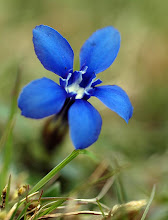



I suffered my first sting of the season today while I was hacking down nettles in the garden, which offers a tenuous excuse to celebrate the achievements of Robert Hooke FRS, the father of English microscopy. Hooke was born in Freshwater on the Isle of Wight in 1635 and in a varied career, that included research in mechanics, astronomy and architecture, produced perhaps the most celebrated book on microscopy: Micrographica, or Some Philosophical Descriptions of Minute Bodies made by Magnifying Glasses withe Obervations and Inquiries thereupon. Samual Pepys bought a copy and commented ‘took home Hook’s book of microscopy, a most excellent piece’, as well he might, as some of Hooke’s descriptions and detailed, exquisite engravings would not be out of place in a biology text book today. Compare his engraving of the stinging hairs on a nettle leaf , above, with the photograph of the hairs on the leaf of the nettle that stung me today – astonishingly accurate, when you consider the rudimentary nature of the microcope lenses he was working with nearly four centuries ago. The nettle sting is a remarkable structure – a long, tapered hollow cell on a pediment (or a 'bladder' as Hooke called it), filled with irritants under pressure and tipped with a minute hooked glass bead that snaps off at the slightest touch, turning the hair into a hypodermic syringe. After watching the whole processes of stinging himself under his microscope, Hooke recorded the following:”The chief thing therefore is, how this plant comes, by so light a touch, to create so great a pain; and the reason of this seems to be nothing else, but the corrosive penetrant liquor contain’d in the little bags or bladders, upon which grow out those sharp syringe-pipes......”. All of Hooke's wonderful engravings from Micrographia can be viewed at http://archive.nlm.nih.gov/proj/ttp/hooke_home.html














Beautiful clear micro pictures. Such tiny delicate structures causing so much pain!
ReplyDeleteSuperb photos, and thanks also for that link to Hooke's book which is well worth following. A couple of pages before his engraving of the nettle there is one of a moss capsule remarkably similar to the photos in your Moss Capsule posting.
ReplyDeleteThanks for the comments. Apparently nettles develop an even denser covering of stinging hairs on new shoots after their old shoots are cut back... this is a plant with attitude!
ReplyDelete